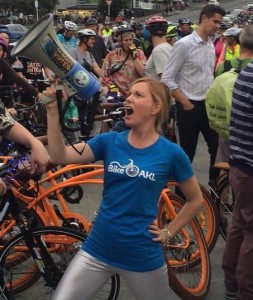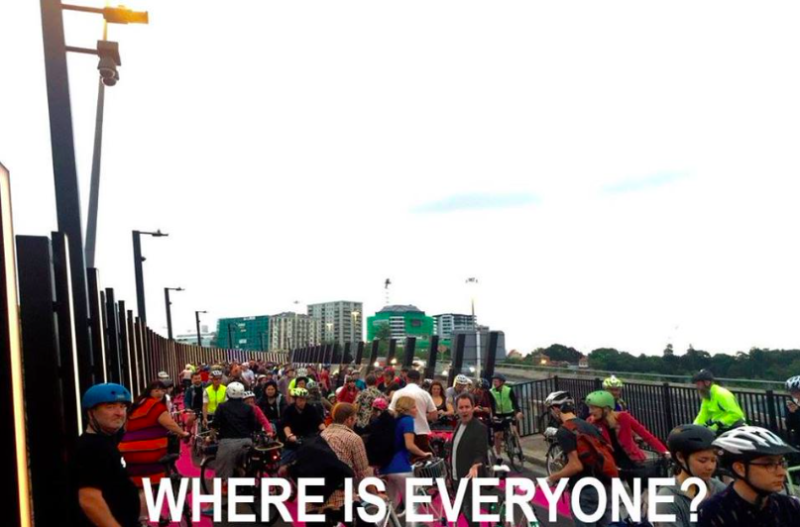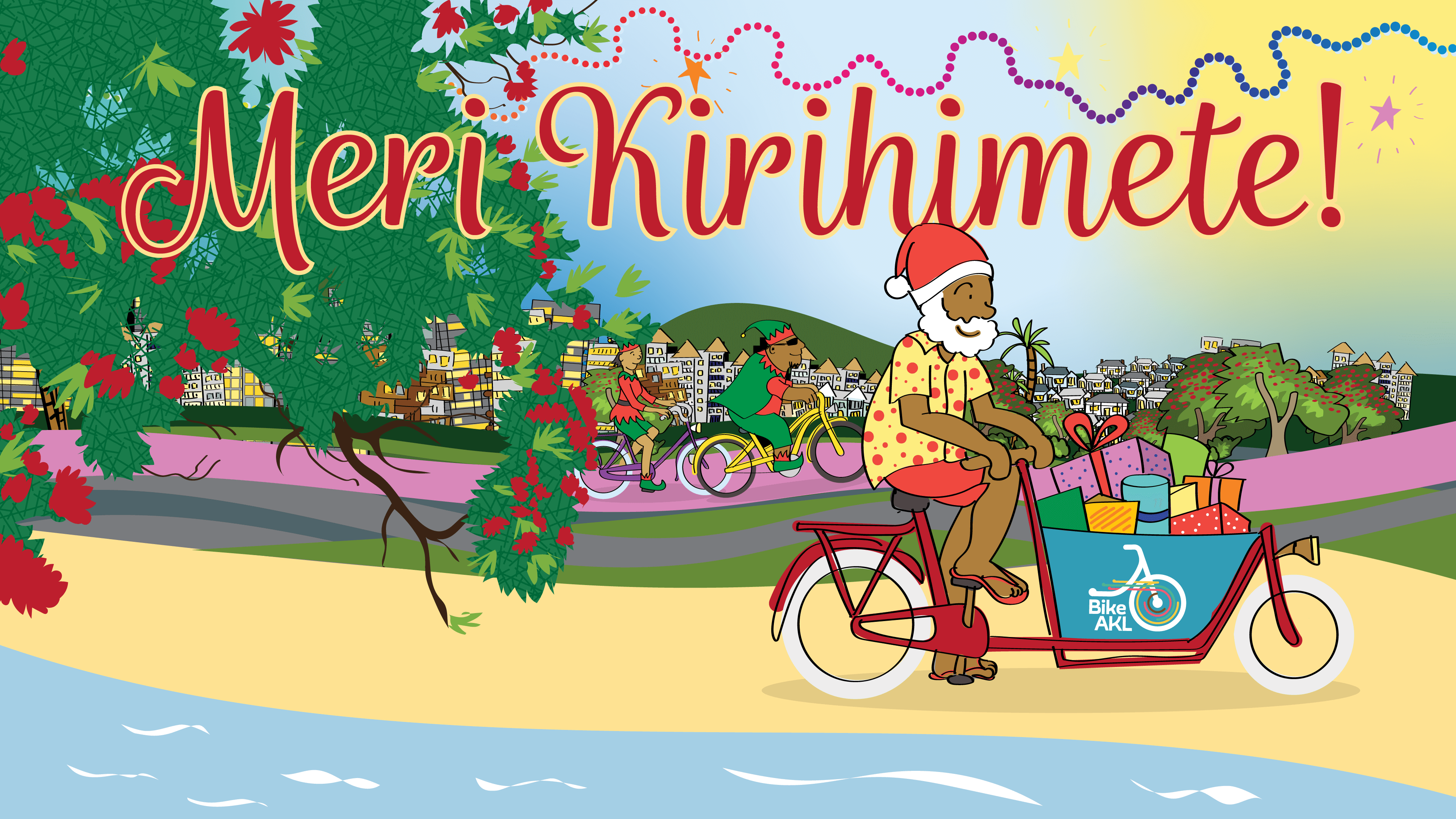 If you’re reading this, we guess you care about cycling. You almost certainly like to stay up-to-date with how things are getting better across the city, or maybe you find yourself clicking through our archives about how bad it used to be and how hard we’ve fought to fix it.
If you’re reading this, we guess you care about cycling. You almost certainly like to stay up-to-date with how things are getting better across the city, or maybe you find yourself clicking through our archives about how bad it used to be and how hard we’ve fought to fix it.
Perhaps you want to get a bit more involved and make sure that the powers that be listen to your voice next time they fix something. Or perhaps you want to raise a burning issue of your own.
One of the easiest ways of doing this is to take part in official consultations.
When local and central government want to do something, often they are required to consult with the community before they go ahead. Whether it’s a local project in your area that at first glance has nothing to do with cycling (but could!), or a new cycleway being planned that you might use, or something bigger on a national level – you are the community on wheels, and you have a right to say what you think.
Bike Auckland has a small but dedicated team of people who try to submit on everything that we think is relevant. Not gonna lie, it’s hard to stay on top of it all, especially as volunteers working in our spare time – but we do our best to ensure that the views of people who ride bikes are taken into account every time this city fixes or changes something.
But to really make an impact, we also need people from the wider community to raise their voices. Numbers matter, and “everyday people” matter. And diversity matters, too – you may well highlight things that we miss, or that we don’t know about, especially if you have local knowledge.
So we always encourage you to take the time to say your bit, whether it’s just quick “I support this”, or a more detailed response.
We know many of you are old hands at this, and we’d love to hear your advice or experience – please share in the comments below. In the meantime, here’s our basic guide for those who are new to giving feedback.
What should I say?
Get familiar with the proposal first – often there are summary documents that give an overview, and/or plans that give you the pictures and layouts, as well as longer versions. Then ask yourself:
- Will this work for me/others on a bike? Think of both yourself and others.
- What should change to make it better? Don’t assume they already know (likewise, don’t assume they know nothing at all). Start with the most important suggested changes and work your way down.
- What can I realistically request? By all means push the boundaries – because we all know that Auckland is catching up with international best practice, and this is to be encouraged – but not so far that your suggestions get put on the ‘impossible’ pile.
If your feedback covers the above, it’s on the right track. And of course, you can always contact us for advice, or read our blog posts that helpfully mention things you might mention in your feedback!
How should I say it?
- Be succinct – it doesn’t need to be an essay (or a lecture). Bullet points are good. If you have lots of detailed points to make, consider listing them as an appendix. If your response is longer than a page, make the first page an executive summary, so the reader can get the gist before ploughing through.
- Share personal examples – these tend to be helpful, if you can follow the other advice (be succinct!). Say why the change / improvement / project is important to you, your family, your school, your neighborhood.
- Back it up if you can (but don’t sweat it) – if you have data/research that supports your case, consider adding it (you can include it as an appendix if it would otherwise be too long). But remember, your voice counts even if it’s ‘only’ your opinion and experience of what makes you feel safe and happy on a bike: that in itself is data!
- Use maps and photos where needed – especially when raising new issues. The person reading your feedback may not know what you’re referring to, or they may need help to understand precisely what you mean. As above, your experience on the ground can be powerful information.
- Keep it cool – even if the initial proposal is utterly hopeless for bikes, aim your passion at the issue, not the person. You want to change minds, and the people on the other end of the feedback are responsible for improving the design, so a polite and constructive approach gets you way further than simply venting fury (yes, yes, we feel it too, but it’s really worth counting to ten before typing!). In the end, you’re a person and they’re a person and this is our town we’re all trying to fix here.
What happens next?
Once the feedback period is over, staff at the other end has to sit down and make sense of all the responses. Your response may end up being recorded in the summary document as something like “57% of all submitters wanted more cycling provision” (which is still very valuable) – or your more detailed requests may end up being worked through in detail, and hopefully changed in the final proposal.
You may also get a response specifically targeted at your queries and change requests; or a report listing similar issues raised and the resulting changes made.
For smaller projects especially, you may hear nothing until it gets built and you see how it looks.
- If your requested changes didn’t get made, don’t despair. Persistence is the name of the game. You are a cycling champion, and champions don’t give up.
- If your changes, or some of them, did get made, celebrate! You are a cycling champion!
How do I find out about upcoming consultations?
We try to highlight as many upcoming opportunities for public feedback as we can, so start by reading this website regularly and keeping an eye on our calendar for submission deadlines. But you can also keep tabs by checking these pages:
- Auckland Council invites general feedback on local projects (very user-friendly and plain language) and submissions on formal resource consent consultations (these are more complex, but worth weighing in on)
- Feedback on Auckland Transport projects
- Feedback on NZTA projects
How do I raise a completely new issue?
What if you want to report something like existing dangerous conditions, but there’s no current project or consultation to tie your feedback to? Check these links on how to report a problem – and use the same basic approach as above.
NB If you’re making a cold call like this, always remember to follow up. “Dropping it into the system” only works if they asked you for it in the first place – so give it a few weeks, then politely chase up a response.
And in the meantime, or even before you make contact, let us know, too. Maybe we can match you up with others out there with the same issue, or put you in touch with a local group or representative who can help further. If the squeaky wheel gets the oil, a whole lot of squeaky wheels might help to roll out the barrel!





